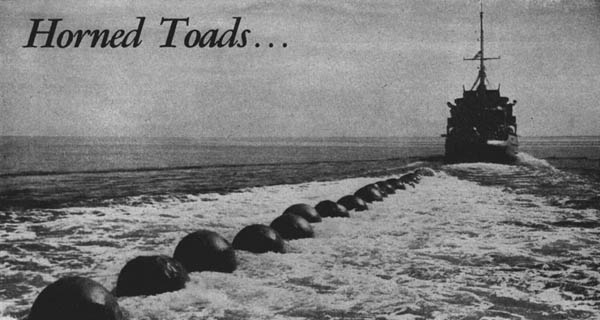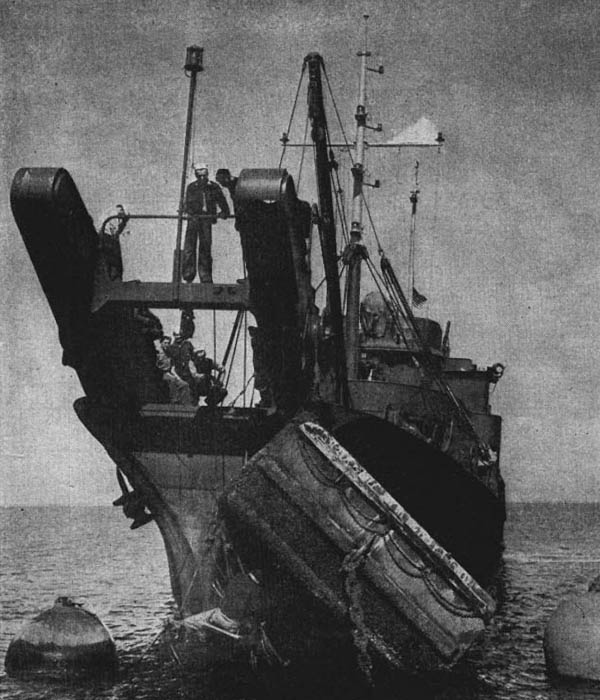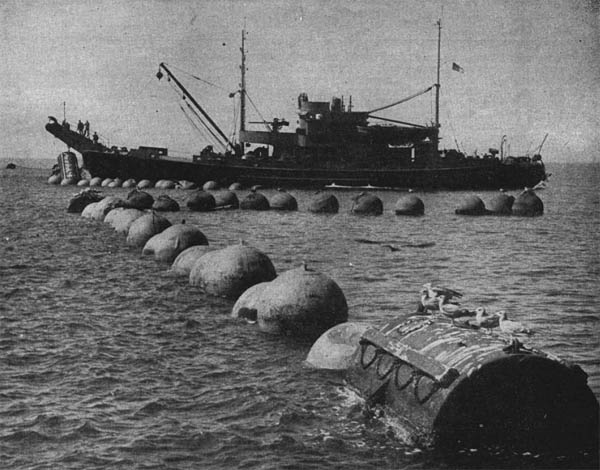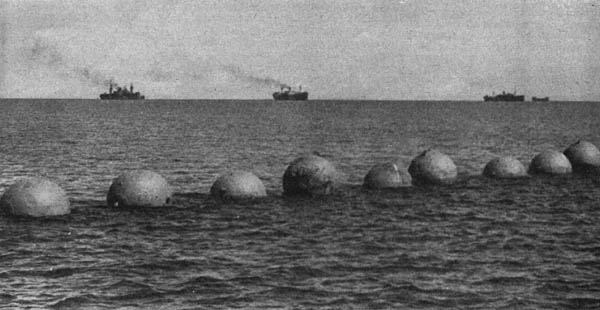A report on net tenders from Bureau of Naval Personnel Information Bulletin, August 1944.
Horned Toads
Net Tenders Shield Allied Ships From Enemy SubmarinesThose odd-looking “horned” craft you may have seen operating around harbors or fleet anchorages are playing an important part in the constant campaign against enemy submarines and other torpedo carriers.
Stern view of tender as she hauls the net, with its flotation buoys, along her wake.
They are the Navy’s ANs–sometimes called “Bulls” or “Horned Toads,” because of the twin permanent booms which form their prows–and their job is to lay and tend the steel nets which close off ports and shield anchored warships against underwater attack.
Closeup of tender’s prow shows horns used as booms for lifting net.
Two types of nets are used–one designed to ensnare a sub or to warn of its presence, the other to stop a torpedo. Some nets are more than two miles long and extend from the surface of the water to the bottom. Net layer crews are called upon to repair breaks in sections after overly strong currents or storms have ripped holes in the heavy mesh.
Gulls on MK II buoy watch as net tender prepares to move new section into position.
ANs come in two sizes–one, carrying a crew of 44, is 152 feet long; the other, with a complement of 52, is 195 feet overall. Both are Diesel-electric driven.
Completely mended, the torpedo net now maintains its protection of ships anchored in distance.
Most of the tenders operate at advance bases. Others protect U.S. ports. Despite their diminutive size and specialized duties, ANs can fight, too. One of them shot down a Zero at Pearl Harbor and another got two Japanese planes at Tulagi.
Official U.S. Navy Photographs.













